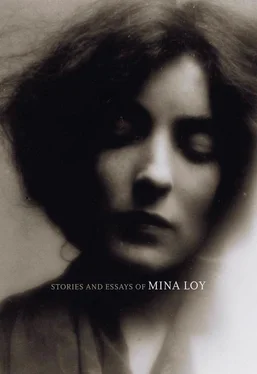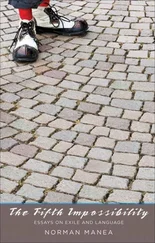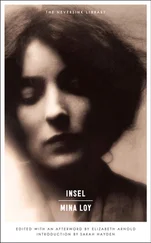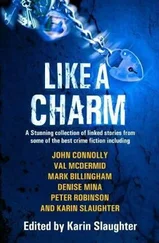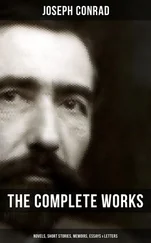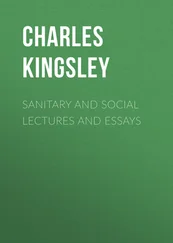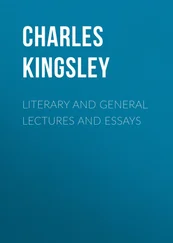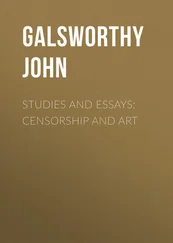Mina Loy - Stories and Essays of Mina Loy
Здесь есть возможность читать онлайн «Mina Loy - Stories and Essays of Mina Loy» весь текст электронной книги совершенно бесплатно (целиком полную версию без сокращений). В некоторых случаях можно слушать аудио, скачать через торрент в формате fb2 и присутствует краткое содержание. Год выпуска: 2011, Издательство: Dalkey Archive Press, Жанр: Современная проза, на английском языке. Описание произведения, (предисловие) а так же отзывы посетителей доступны на портале библиотеки ЛибКат.
- Название:Stories and Essays of Mina Loy
- Автор:
- Издательство:Dalkey Archive Press
- Жанр:
- Год:2011
- ISBN:нет данных
- Рейтинг книги:3 / 5. Голосов: 1
-
Избранное:Добавить в избранное
- Отзывы:
-
Ваша оценка:
- 60
- 1
- 2
- 3
- 4
- 5
Stories and Essays of Mina Loy: краткое содержание, описание и аннотация
Предлагаем к чтению аннотацию, описание, краткое содержание или предисловие (зависит от того, что написал сам автор книги «Stories and Essays of Mina Loy»). Если вы не нашли необходимую информацию о книге — напишите в комментариях, мы постараемся отыскать её.
Stories and Essays of Mina Loy
Stories and Essays of Mina Loy — читать онлайн бесплатно полную книгу (весь текст) целиком
Ниже представлен текст книги, разбитый по страницам. Система сохранения места последней прочитанной страницы, позволяет с удобством читать онлайн бесплатно книгу «Stories and Essays of Mina Loy», без необходимости каждый раз заново искать на чём Вы остановились. Поставьте закладку, и сможете в любой момент перейти на страницу, на которой закончили чтение.
Интервал:
Закладка:
There is a dance of ceremonies of meeting and introduction. The youth invites the maiden and her maternal ascendants to partake of monstrous syrups in the bower. This incident is very brief — the grandmother and mother dance off rigorously with the maiden — who glances back once — and sees the youth contemplating the blue bow he stole from her when a child.

Later: Twilight falls — the fair disappears. The maiden steals out in the dusk and dances to the hollow tree on the village green — a dance of fireflies induced by moving lights — always with that together and apart dancing of insects in the air which gives the leit-motif to most of the rhythm of this ballet. The maiden has stolen to the hollow tree to look for the marble she had so long ago thrown away — it is the hour of sentiment and she is thinking of him. The fair is invaded by amorini who turn on the merry-go-round (a reproduction of the one in Paris with silver horses and mermaids). They fly away, the scene changes to a field of long grass. Several ladies are plucking fancy grasses — the cupids attack them from behind puffy little clouds in the sky — they run hither and thither affrighted, their arms outflung — under a shower of golden arrows—“the maiden” is hit. This scene is called “Ladies in a Love Storm.”

The maiden has seen the youth contemplating her blue ribbon. She has been hit by cupid and she wants to have something to remember the youth by. So she searches in the hollow tree and finds the marble he gave her years ago — the marble bounds out on to the middle of the stage — where it appears as an enormous replica of itself with its coloured lines and twists. The maiden leans against the tree gazing at it — and gradually it evolves out of itself “the spirit of the marble”—it is a slim, a lithe sprite in all-over tights, coloured like the marble. He is almost incorporate with the marble. This dance must be danced by a very fine acrobat contortionist who can curve and squirm round the orb, push it with his pectoral muscles and when it rolls, remain with it by throwing his body and legs over his head. He must stand on his head on it, but otherwise his motion must identify itself with the circular rolling of the orb. This dance, for the maiden’s eyes, expresses the personification of objects through sentiment — and that stirring of the imagination at dusk, that apprehends some living entity in the phenomena of nature that please or arouse the dream-sense.
The old marble has become an object of palpitating interest to the maiden.
All this time the firefly quadrille continues as rhythmic accompaniment.
The scene changes — it is still dusk. There is a narrow high arch in a wall — through it one can see a fall of feathery foliage by artificial light — peculiarly beautiful green— There linger some Gypsy-like crass glass colored light ladies — beckoning to the youth— He is still gazing at his blue ribbon— The light ladies stroll up and down, pacing — their feet gripping the ground stealthily— This has still the together and apart rhythm of the insect quadrille — exactly as I have observed it outside a shady hotel in Paris. The youth remains oblivious— It grows darker for the light through the archway is extinguished and all that can be observed for a brief space is the rhythm of the pacing, stealthy, half-aimless, half purposeful legs— Then they disappear.
The youth looks up from his ribbon which does not entirely satisfy him — and out of the darkness where the light ladies have been a large, lashy, luminous eye winks at him and is extinguished— The youth is decided— He stuffs the blue ribbon, which symbolizes his conscience, into his pocket and throws sentiment to the winds. He begins to dance in a defiant, distracted, disjointed, whirling motion — symbolizing the ebullition of youth — and in every direction towards which he whirls, a gigantic wild oat springs up right in front of him, until he dances in a perfect forest of them that absolutely impedes his movements— The scene fades— This is the dance of the wild oats.
Then follow the wild oats episodes.
The following scene is clear and gay — and the youth is dancing up to a quaint glass house — with two doorways side by side. From one doorway appears towards him a ravishing lady in a (blue or pink) paper crinoline. The sun is shining and the youth is about to clasp the lady when she pops back into the glass house and with a sudden shower of rain, her husband with a (pink or blue) umbrella emerges suddenly from the other door— The youth darts back— The rain stops— The husband disappears — the ravishing lady is again almost in his arms — when the same incidents repeat themselves. The youth, for his episode with a married lady, has come upon the old-fashioned barometer couple who predict the weather. Here we have again the to-and-fro movement in the dance rhythm. After the alternation of rain and shine has taken place a few brief times, the inevitable happens. So much sun and rain have induced a rainbow. The barometer house fades away and the youth is attracted to the spirit of the rainbow. A beautiful creature, all coloured like the rainbow. He is transported onto the rainbow — and dances (the two figures are suspended from wires) tip toe— A dance of wooing on the rainbow (which can consist of an arc of colored lights). When he is about to take her in his arms the (enormous) blue ribbon wafts itself in between him and the spirit of the rainbow — and arrests the dance. The youth falls off the rainbow onto the wet sand of the sea shore. But he has been dyed in the colours of the rainbow — and the mermaids mock at him— They sprinkle him with water to wash the rainbow stain away — and now he is all dripping wet— This effect he can attain by having long strings of transparent sequins hidden in pockets of his clothes which he can let out unnoticeably as he prepares to dance the short staccato dance of shaking himself dry — the dripping will sparkle as he dances and he will manage, by unclasping one clasp that holds them all together, to let them fall to the ground. He is now dry, and is free to turn his attention to the wooing of a beautiful mermaid with long green glass hair, who sits on a rock to comb it and he sits beside her, with her tail curled round his legs.
They enjoy a surprising spectacle — in the surf of the waves the mermaids are dancing — they are the genus of mermaids that have double tails — and on these tails they dance the trick dances that human beings dance with their legs— These dancers must also be suspended on wires in order to be able to move the tails with their legs inside them, the tails being much longer than their legs— This dance will be enchanting. The mermaids can stand on the tip of the one tail and twirl the other tail round it in pirouette. They will dance the Russian dance, their arms folded with one tail curved under them and the other tail flung violently out. The composition of the row of mermaids dancing in different attitudes on their double tails in their amusing curves will be most original.
The wooing of the beautiful mermaid is getting on finely. She coquettishly takes out her comb to comb her hair (the comb is enormous) when the youth, who is just about to embrace her, beholds the symbolical blue ribbon twisting in and out of the prongs of the comb. He leaps from the rock — all the mermaids fade away — and a huge blue wave with a crest of dripping foam hovers above him and remains stationary as a background to the next dance. In the shadow of this wave — some collapsed jelly-fish are lying on the wet sand — they gradually pick themselves up and dance, under the hovering curve of the blue wave, the dance of the jelly-fish with their crystalline domes and long floating colored streamers depending from them — they are all enticing the youth when the wave subsides — the jelly-fish fade away — and on a calm summer ocean appears the cortege of Venus in a shell drawn by horses like the white china figures I collect. The youth leaps on to the shell of Venus to which she beckons him and she points to the horizon — out on the horizon the youth sees the blue ribbon drifting — and the scene fades.
Читать дальшеИнтервал:
Закладка:
Похожие книги на «Stories and Essays of Mina Loy»
Представляем Вашему вниманию похожие книги на «Stories and Essays of Mina Loy» списком для выбора. Мы отобрали схожую по названию и смыслу литературу в надежде предоставить читателям больше вариантов отыскать новые, интересные, ещё непрочитанные произведения.
Обсуждение, отзывы о книге «Stories and Essays of Mina Loy» и просто собственные мнения читателей. Оставьте ваши комментарии, напишите, что Вы думаете о произведении, его смысле или главных героях. Укажите что конкретно понравилось, а что нет, и почему Вы так считаете.
